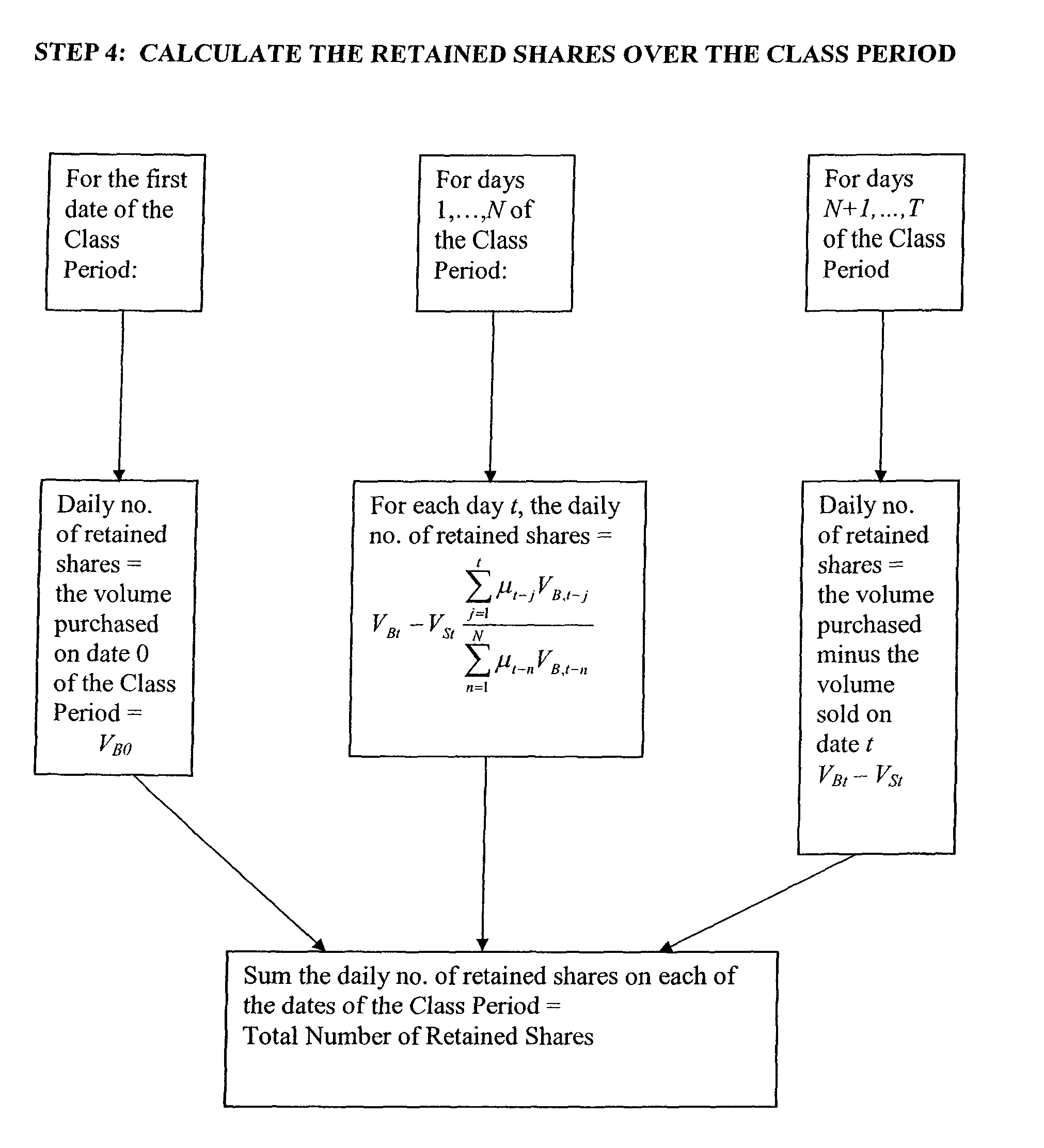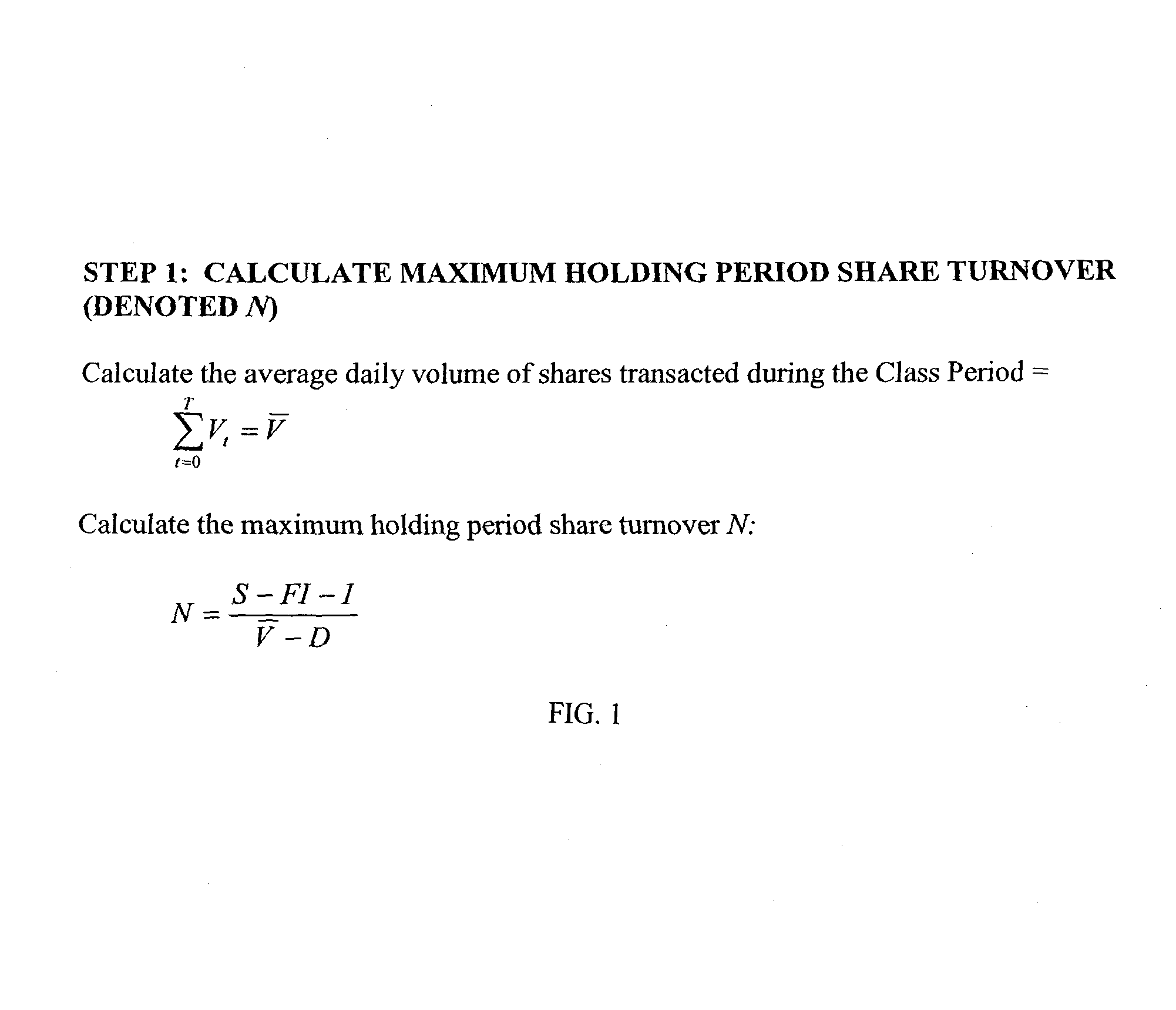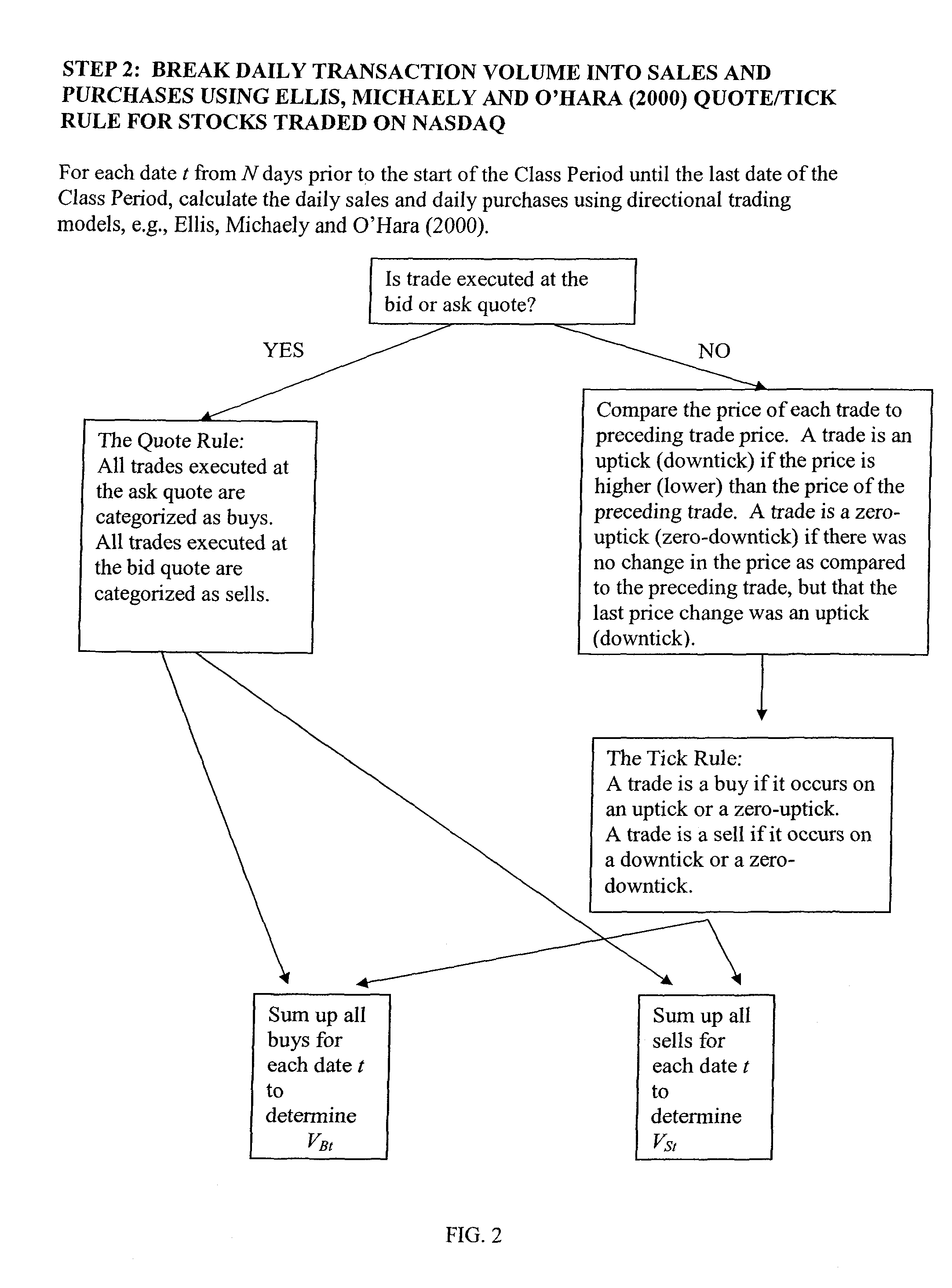Arrangement for and a method of determining damages in shareholder class action litigation
a class action litigation and class action technology, applied in the field of class action litigation arrangement for and determining damages, can solve the problems of no such theoretical basis currently used to calculate the number of damaged shares, the spread of fraud-on-the-market litigation, and the decline of share prices, so as to reduce the dealer's inventory cost, the probability of success, and the likelihood of a trade. the effect of success
- Summary
- Abstract
- Description
- Claims
- Application Information
AI Technical Summary
Benefits of technology
Problems solved by technology
Method used
Image
Examples
Embodiment Construction
[0027]An arrangement for, and a method of, more accurately determining damages in shareholder class action litigation propose a theoretically-grounded microstructure trading model (TMTM) that is parameterized using publicly available data. The number of retained or damaged shares is determined using the TMTM method in accordance with this invention, and is then compared to the number determined from the known PTM and the TTM methods, all illustrated using publicly available data for Enron Corporation, by way of a non-limiting example.
[0028]All trading methods utilize the float, i.e., the number of shares that are available to trade. It is common practice to calculate the float by deducting from the total number of shares outstanding the number of shares held by insiders and institutions. The float on date t is denoted as Ft. To calculate the number of days it takes for the float to change hands, the ratio Ft / Vt is computed where Vt is equal to the total trading volume (less dealer a...
PUM
 Login to View More
Login to View More Abstract
Description
Claims
Application Information
 Login to View More
Login to View More - R&D
- Intellectual Property
- Life Sciences
- Materials
- Tech Scout
- Unparalleled Data Quality
- Higher Quality Content
- 60% Fewer Hallucinations
Browse by: Latest US Patents, China's latest patents, Technical Efficacy Thesaurus, Application Domain, Technology Topic, Popular Technical Reports.
© 2025 PatSnap. All rights reserved.Legal|Privacy policy|Modern Slavery Act Transparency Statement|Sitemap|About US| Contact US: help@patsnap.com



